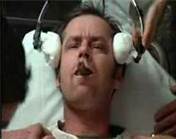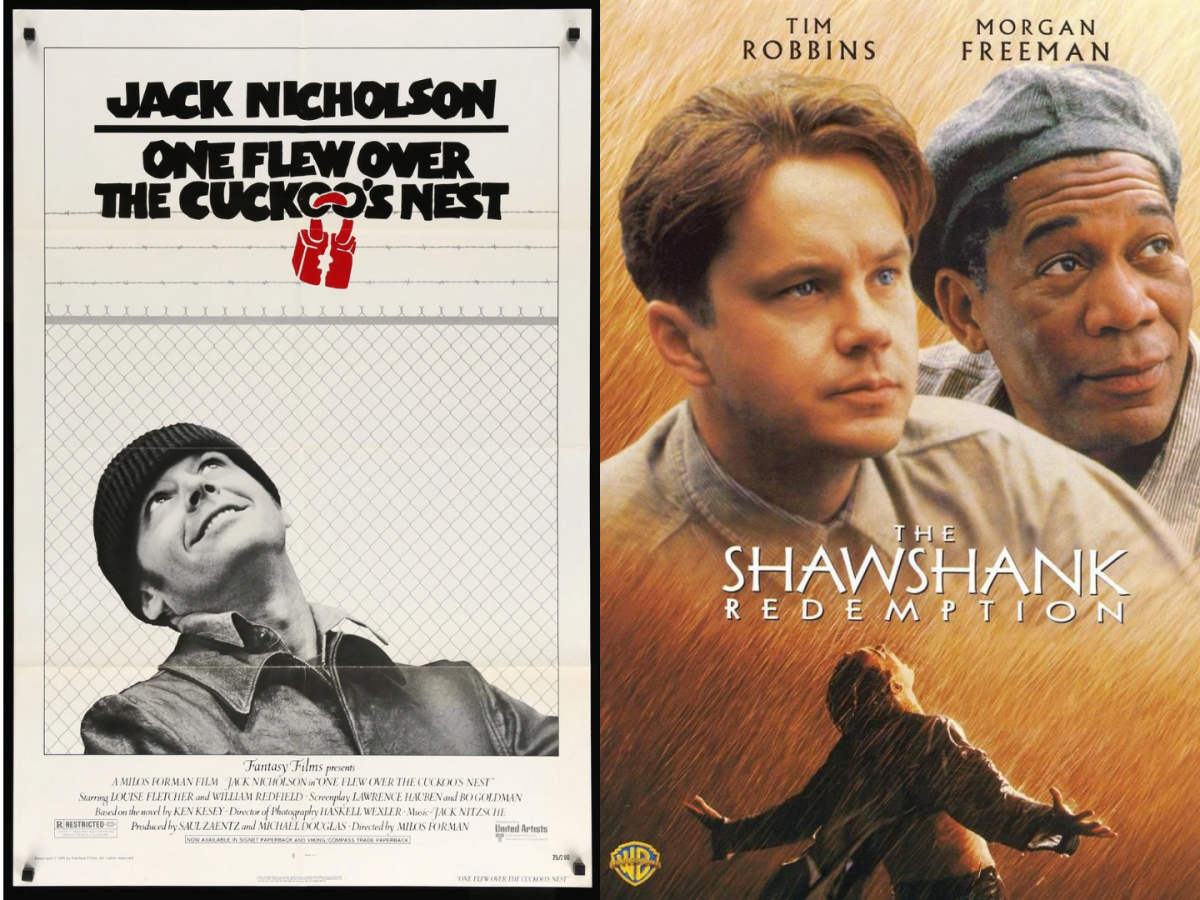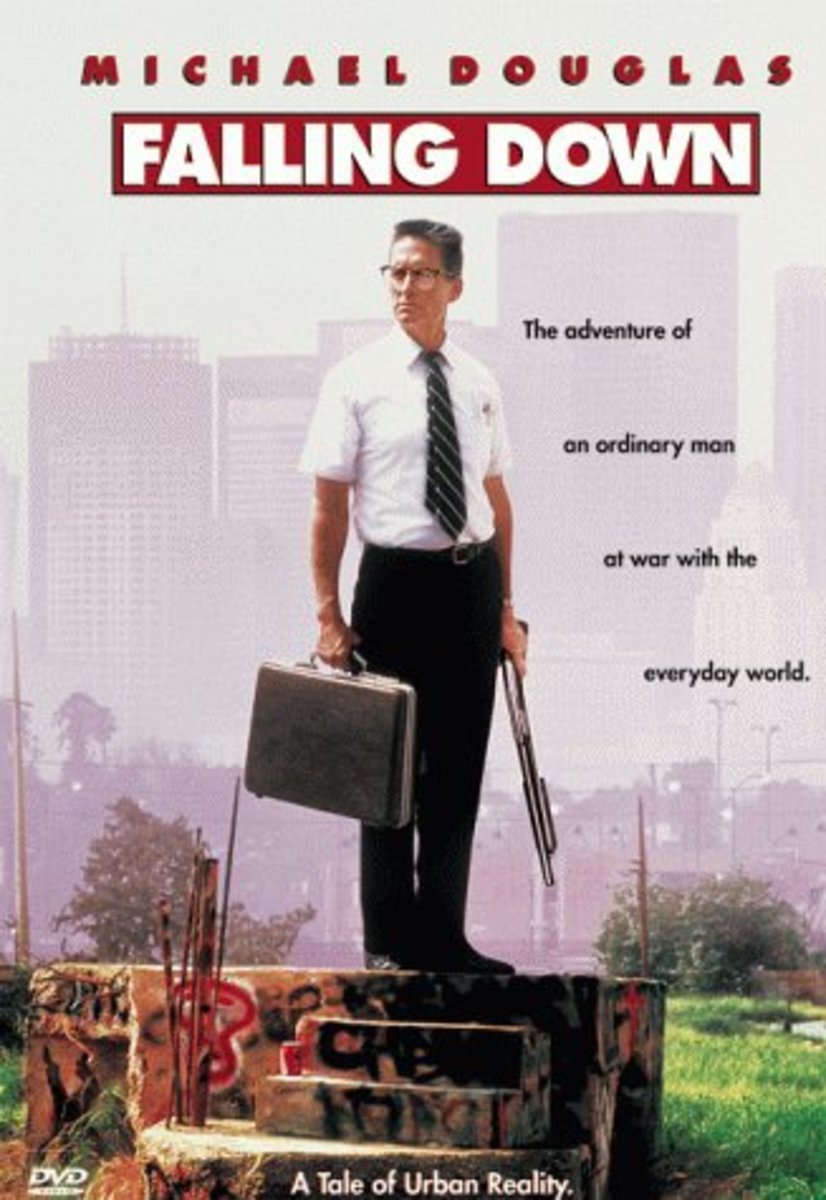A Review of Milos Forman's 1975 film "One Flew Over the Cuckoo's Nest."

Why Even Bring it Up?
In 1975 Milos Forman directed "One Flew Over the Cuckoo's Nest", an adaptation of the novel by Ken Kesey.
He is the son of Jan Thomas Forman and was born on the 18th of February in 1932 in Caslov Czechoslavakia. His parents died in the nazi concentration camps of Auschwitz while he attended film school in Prague.
"One Flew Over the Cuckoo's Nest" is a novel by Ken Kesey; from his first hand experiences, which examines mental illness and the care of our nations mentally ill.
Even though "One Flew Over the Cuckoo's Nest" had tremendous impact on the changes that occurred in State Mental Health Facilities, the film can be read as an examination of liberation.

Where Does This Film Fit?
According to a report given on ABC Evening News on July 31, 1975, the National Institute of Mental Health claimed that twenty million Americans suffered from some form of mental illness and one seventh required psychiatric care.
"One Flew Over the Cuckoo's Nest" was a major player in State Mental Health reform of 1975. After reports of more than one hundred deaths at two State Psychiatric Facilities in California in the 1970's, California began a long reform movement that went far into the eighties.
The issue of informed consent by patients before receiving electro-convulsive therapy was being examined by congress. The ABC Evening News reported on June 26, 1975, that the Supreme Court ruled unanimously that harmless mental patients could not be locked up in institutions where they would receive appropriate treatment.
The NBC Evening News reported on June 22, 1975 that cases were brought before the Supreme Court involving the confinement of people without there consent. The Supreme Court ruled that the patient had the constitutional right to treatment over custodial care given in mental hospitals.
Other main issues of concern being addressed in the 1970's was the extensive use of extremely potent pyschotropic drugs, the medical use of lobotomies, and electro-convulsive therapy.
"One Flew Over the Cuckoo's Nest" brought these issues into the public eye for the first time. The patients in the film received heavy doses of medication throughout the film. McMurphy's refusal to take his medication and the passive manner in which it was forced upon questions whether the medication was being used as a tool for curing mental illness or as a means to keep order.
Electro-convulsive therapy played a major role in the film. Forman builds incredible tension in the scene where McMurphy and the Indian wait for their EC treatments. He shows McMurphy encountering the stress of watching other patients enter and exit the EC room. He also shows a close-up of McMurphy's face while McMurphy is experiencing EC therapy.
The viewer also is introduced to McMurphy's condition after his lobotimization. The issues of patient consent are addressed when McMurphy realizes that he is committed and did not have the same freedoms of the patients ona voluntary basis.
For the first time in American film the reality of the conditions of State run Mental Facilities was made available to the public.
Alienation and Isolation
Ken Kesey's book, "One Flew Over the Cuckoo's Nest" was instantly labeled a classic after widespread publication. Kesey attacked many of the issue's in the book in an extremely symbolic light.
Forman handled the film in direct contrast to the novel. Forman had other views to express than Kesey, and instead of using symbolism, he created the illusion of blunt realism to drill his point to the casual viewer: he used cinematography to give the illusion of reality.
Throughout the film wide angled shots covered small groups of activity. Each shot is filled with ample light from large barred windows that allow for natural light to fill the institution. Even though the large amount of light helps to create a feeling of alienation by widening the area of action, Forman compartmentalizes all the open spaces into small areas of isolation.
One of these areas would be the nurse's station in contrast to the area where the characters play cards, or the area where group therapy occurs. When McMurphy arrives he immediately lets his presence be known in all the different areas and tries to conquer their isolation.
He accomplishes this toward the end of the film when the patients are no longer located in small groups but crowd around McMurphy.
Forman built an amazing contrast between the institution and "freedom" when McMurphy hijacks the facility bus and takes the patients on a fishing trip. It is interesting to notice that the lighting remains the same, and that event though the characters are "free", they are still grouped together and alienated from society.
Therefore, Forman shows the viewer that even though there are bars and barbed wire keeping the committed in and the "sane" world out, mental illness creates it's own alienation. This alienation was supported by the institution and never addressed.

A Story of Liberation
The liberation of the character of McMurphy help to define liberation in the text of the film. McMurphy arrives at the institution and makes it clear to the viewer that he had himself committed, to avoid work in a prison camp.
He is self centered and self absorbed and at first only uses the other characters for his own self amusement.
During his stay he realizes the conditions in which the characters are treated, At first he works on his own behalf, yet slowly is moved by friendships that are built. Based on these friendships he begins working to better others lives as well.
The major turning point in McMurphy is his realization that he will be held in the institution for as long as the staff deems necessary. At first he expresses anger towards the others for letting him behave the way he has.
When McMurphy has the opportunity to leave the hospital he hesitates and decides to stay. Finally, when billy ends up killing himself due to the verbal abuse of Nurse Ratchet he attacks Nurse Ratchet out of the rage built over his "love" for his friends.
This action leads to the "martyrdom" of McMurphy when he is lobotomized for his misbehaviours.
Therefore, his redemption is his acceptance of his condition, and his liberation is his acceptance of his consequences.
After reading the film the liberation text becomes apparent not only in McMurphy but in other characters such as the Indian, and Billie. Each character undergoes his redemption and liberation within themselves yet intermingled within the relationships of others.
McMurphy is not the saviour of the others; he is only an individual who accounts for the beginnings of redemption and liberation. The questions arises if he truly changed anything.
In Conclusion
Forman wanted the audience to be aware of the misconduct in State Run Mental Institutions of 1975 and Kesey's tale was written well enough to enthrall and move the viewer.
The redemption and liberation of the characters in the movie and how this interweaves itself between them, offers a doorway into the definition of liberation in our society, and how as a dramatic tool can capture the hearts of so many.









